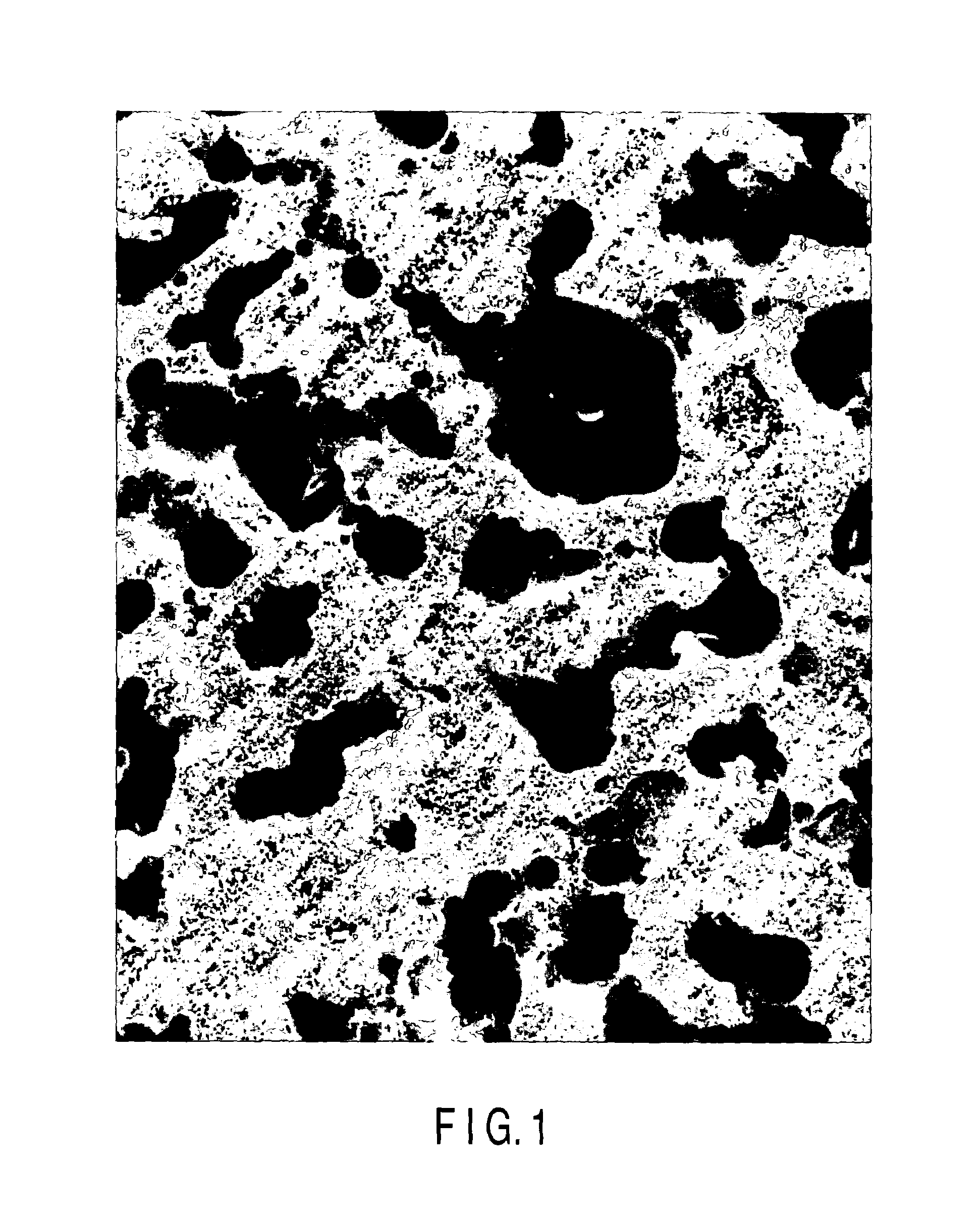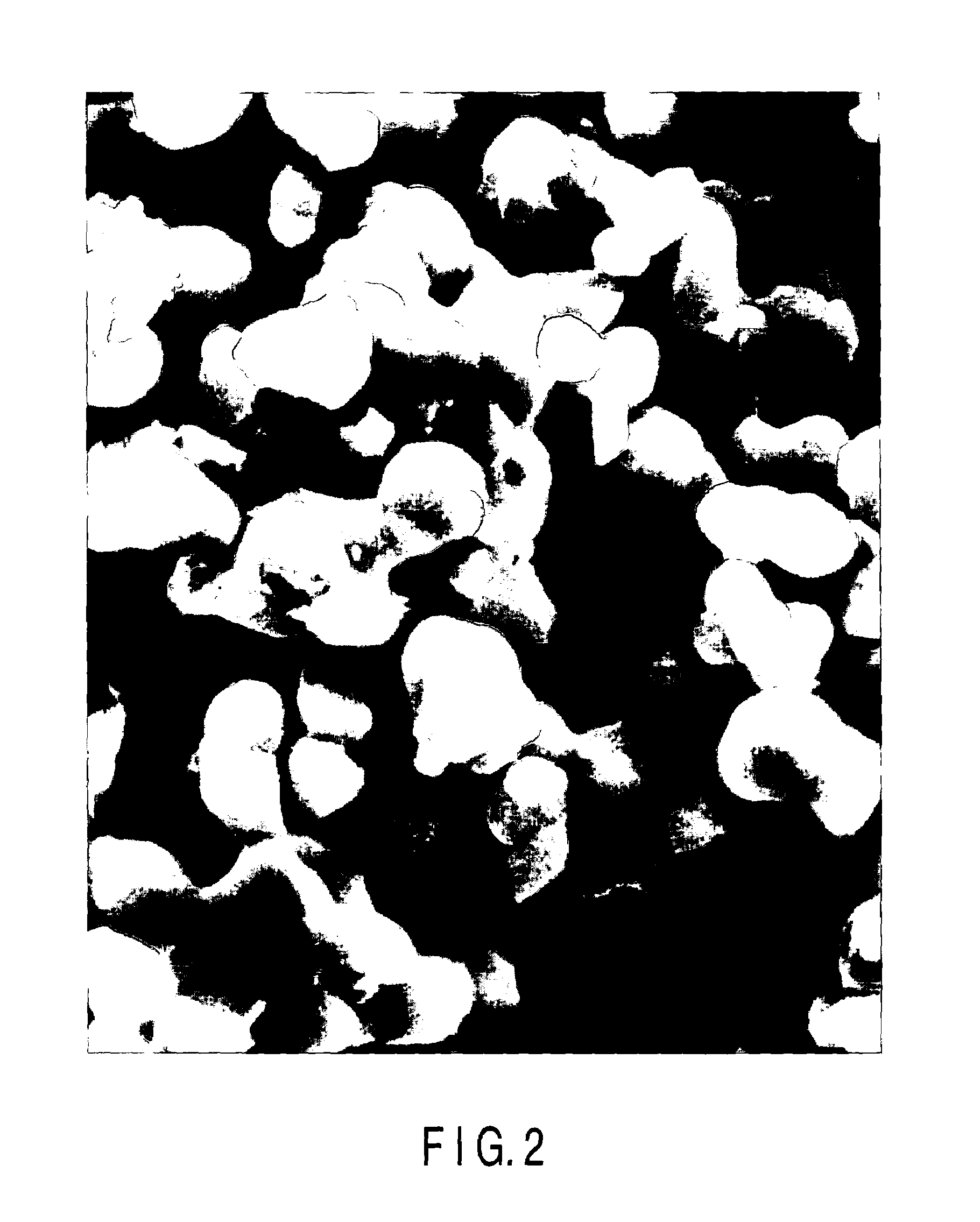Artificial bone and tissue engineering carrier
a technology of artificial bone and tissue engineering, applied in the field of artificial bone and to a tissue engineering carrier, can solve the problems of affecting the quality of life of the patient, affecting the operation of the transplantation, and affecting the quality of the patient,
- Summary
- Abstract
- Description
- Claims
- Application Information
AI Technical Summary
Benefits of technology
Problems solved by technology
Method used
Image
Examples
example 1
[0040]This example illustrates one manufacturing example of a porous body to be obtained through the employment of β-TCP as calcium phosphate-based ceramic.
[0041]The synthesis of the β-TCP was performed by means of mechanochemical method as follows. Namely, calcium carbonate powder and calcium hydrogen phosphate dihydrate powder were weighed at a molar ratio of 1:2 and placed, together with pure water, in a ball mill pot. Then, the resultant mixture was pulverized in a ball mill for about all day long to obtain a slurry. The resultant slurry was dried at a temperature of about 80° C. and then sintered at a temperature of about 750° C., thus obtaining powder which was found as being a high-purity β-TCP which was excellent in sintering property.
[0042]Then, water, an ammonium acrylate-based deflocculating agent and a polyoxyethylene alkylphenylether-based surfactant were added to this β-TCP powder and stirred to prepare a foamed slurry. The resultant foamed slurry was then allowed to d...
example 2
[0050]The β-TCP porous body (herein referred to as a sample “a”) which was manufactured in Example 1 was implanted to make up for the thighbone of a rabbit to thereby evaluate the β-TCP porous body. As a control, the β-TCP powder prepared in the same manner as in Example 1 by means of mechanochemical method was mixed with a glycerin-based surfactant to obtain a mixture. By making use of this mixture, a porous body (herein referred to as a sample “b”) was manufactured by means of the same wet foaming method as employed in the preparation of the sample “a” and was similarly implanted to make up for the thighbone of a rabbit to thereby evaluate the porous body.
[0051]Incidentally, this sample “b” was found to have a porosity of 75% which was the same as that of the sample “a” and a pore size ranging from 100 to 300 μm as observed by means of SEM. However, when the interconnecting property of the pores was evaluated by making use of the mercury injecting method, the value “A” illustrated...
example 3
[0057]A cell growth factor was incorporated in the β-TCP porous body (sample “a”) which was manufactured in Example 1. As for the cell growth factor, rh BMP-2 was employed and dissolved in a buffering solution. The resultant solution was allowed to penetrate into the porous body so as to fill the porous body with the solution at a ratio of 10 to 1000 μg per 1 cm3 of the porous body. The resultant porous body was dried in vacuum or lyophilized, thus obtaining an artificial bone.
[0058]This artificial bone was found excellent in affinity with living cells and capable of permitting living cells to smoothly enter into the inner portion of the artificial bone. At the same time, this artificial bone was found excellent in promoting the propagation of living cells.
PUM
| Property | Measurement | Unit |
|---|---|---|
| Fraction | aaaaa | aaaaa |
| Fraction | aaaaa | aaaaa |
| Diameter | aaaaa | aaaaa |
Abstract
Description
Claims
Application Information
 Login to View More
Login to View More - R&D
- Intellectual Property
- Life Sciences
- Materials
- Tech Scout
- Unparalleled Data Quality
- Higher Quality Content
- 60% Fewer Hallucinations
Browse by: Latest US Patents, China's latest patents, Technical Efficacy Thesaurus, Application Domain, Technology Topic, Popular Technical Reports.
© 2025 PatSnap. All rights reserved.Legal|Privacy policy|Modern Slavery Act Transparency Statement|Sitemap|About US| Contact US: help@patsnap.com



